
These sesame crusted bread rings are a breakfast and street food staple in Istanbul and much of Turkey. Try this Turkish recipe for simit your next breakfast, brunch or lunch. Perfect alongside cheese, tomatoes, olives and scrambled eggs!
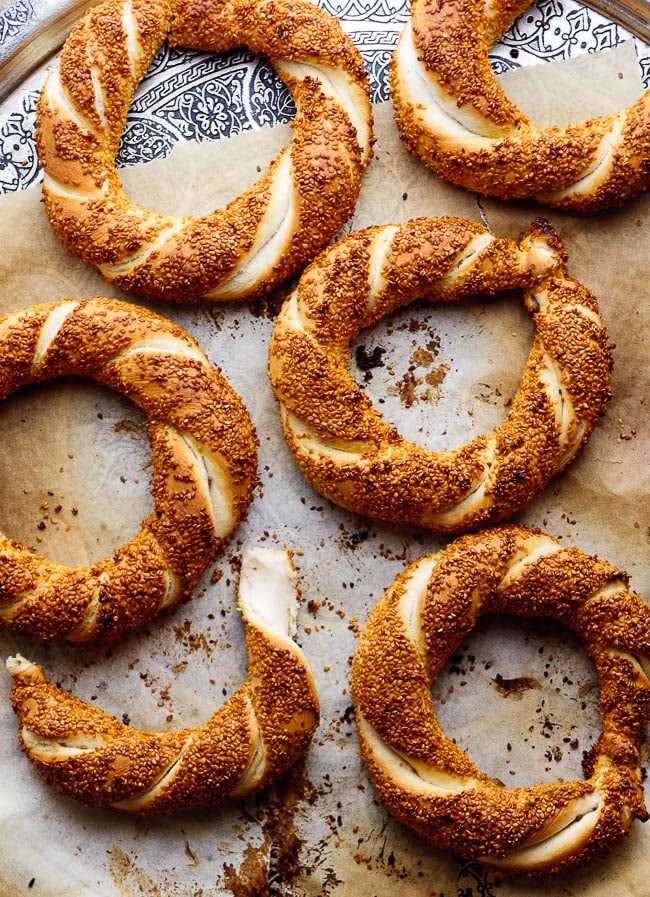
The street vendors in my neighbourhood of Balat in Istanbul know how to announce the arrival of the day’s fresh simit. I’m lucky. One of Istanbul’s oldest simit bakeries is just up the road where I live.
Just after midnight, they start working, making sure the neighbourhood is supplied with fresh wood-fire oven baked simit from dusk till midday. First, to the early birds looking for a quick bite on their way to work.
Later, as the sleepy neighbourhood finally starts coming to life after 10am, to the street sellers. We have two.
One of them is a little mad, in a charming sort of way. He carries a huge, circular wooden tray stacked with simit on his head. Once he finds a good spot, he conjures up a little stand for his tray and loudly announces:
—Simit! Fresh simit! Hot simit!
If you buy from him once, his persistence when he sees you again is second to none. I may be in the middle of a run, but he will still try to sell me simit!
A much beloved Turkish street food
Simit is the most popular and omnipresent street food in Istanbul, and much of the rest of the country besides. If you’ve ever been to Turkey, you’ve surely come across it.

If not from a street vendor like ours, perhaps a less intrusive one with a retro cart stacked high with the golden, sesame crusted bread rings. Or, at the very least, sliced into quarters and put into a bread basket at your hotel breakfast.
It’s one of my favourite foods to grab while on the go. It’s filling, tasty and very cheap. When I came to Turkey, a single simit was usually 1 TR – around US$0.30.
While I’ve seen many suggest Turkish simit to go with, say, Turkish lentil soup at dinner, simit is a breakfast food. By late morning, most simit bakeries shut down or transition to other baked goods more in demand in the afternoons.
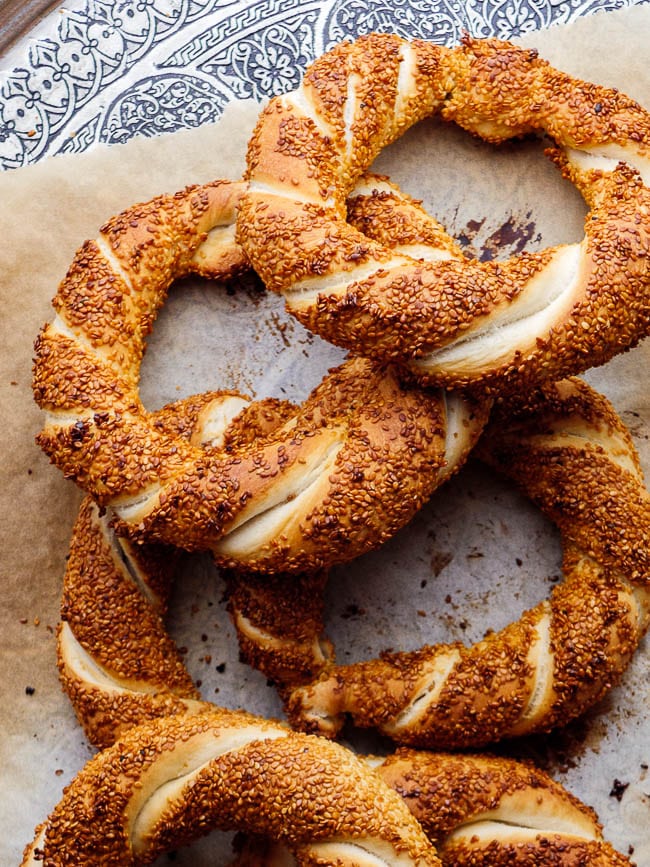
And simit must be eaten fresh. It is said that the perfect time to eat simit, is 10 minutes after it comes out of the oven. Still warm, but not scorcingly hot.
What makes a simit a simit?
Simit comes in many shapes and sizes, even different names in certain parts of the country. In the coastal city of Izmir, for example, it is known as gevrek.
The street food version is typically fairly thin and compact, much like a twirled bagel. In bakeries, they’re usually fluffier and more akin to a white loaf in texture – presumably because they use the same dough as for the loaves.
What makes a simit a simit, are there essentially two things.
The shape is essential. While the size and texture may vary, simit is always a ring made up of two intertwined strands of dough.
The second, is the crust. Simit should be packed so full of sesame seeds, only the dough intertwinings should expose the bread itself.
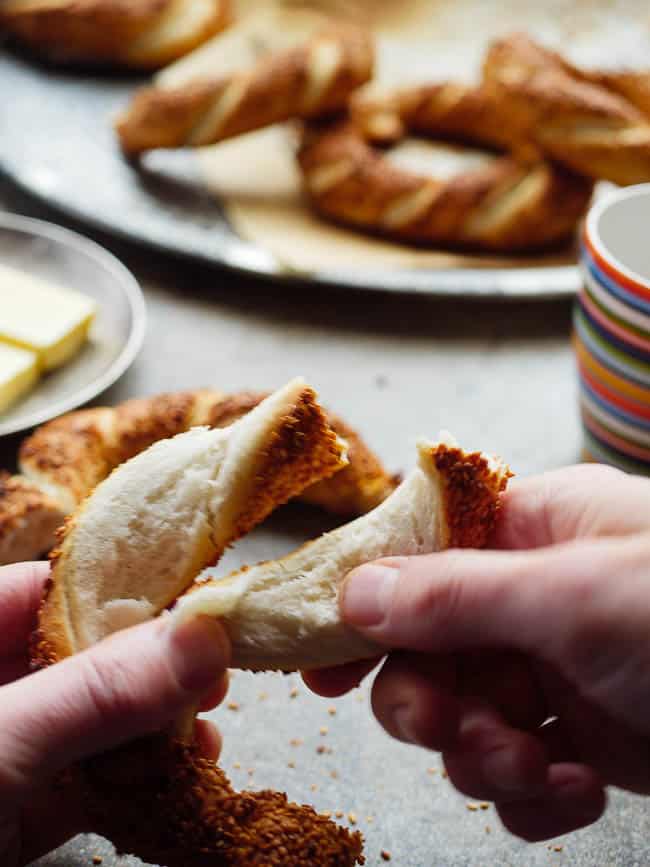
Today, you can get healthier(?) versions crusted with sunflower and pumpkin seeds instead of the more traditional sesame seeds. Not all Turks approve, but the option is there, primarily in wealthier (and more health-conscious) neighbourhoods.
Crucially, grape molasses, or üzüm pekmezi in Turkish, is what makes the seeds stick to the simit. In addition to being a natural product, grape molasses is essential to giving simit its characteristic flavour and golden colour.
This is, unfortunately, not always adhered to. Coloured glucose syrup or equivalents are much cheaper for those who are more conscious about price and profit margins than quality.
How to make simit, Turkish street food style
The types of simit sold by street vendors, are, in my humble view, far superior to bakery or other versions. These are crispy, thin and fairly compact.
To achieve this effect in simit, the key is in the preparation of the dough. Compared to a regular loaf, it must be under-kneaded and under-proofed.
The bonus? Less kneading, less waiting, making it all the easier and more approachable to make at home. Even on a Sunday morning!
Once you’ve gotten the hang of it, you can have fresh simit like you get them in Istanbul on the table in around an hour and a half. Perfect for the early morning bird who gets out of bed a little earlier than everyone else on the weekends.
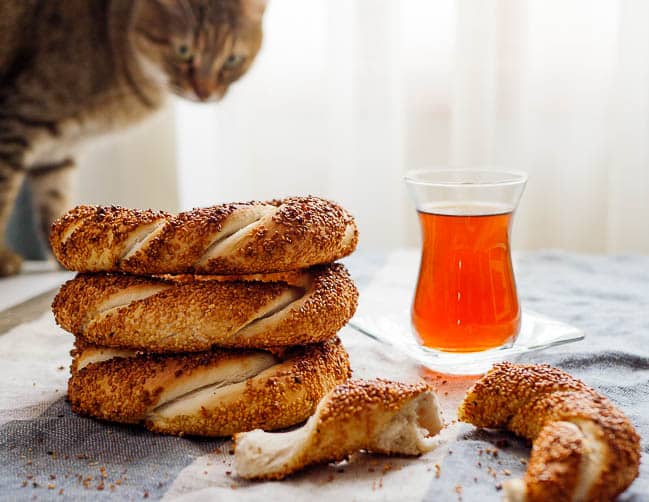
And if that’s not you, it’s worth getting up a little earlier just to make it. Or why not make it a brunch?
Classic Turkish recipe
I got the recipe for these simit from Burak, the bread master at Refika’s Kitchen. Burak, in turn, got it from his boss, Refika Birgül, who runs the everything-food business Refika’nin Mutfagi together with photographer Bahar Kitapci.
Bahar is the photographer for my books, so I’ve gotten to know them quite well over the years. Burak even helped shape and bake the simits that were photographed for my second book, Aubergine & tahini, which came out in Norway winter 2020 (as of current, the book is unfortunately only available in Norwegian).
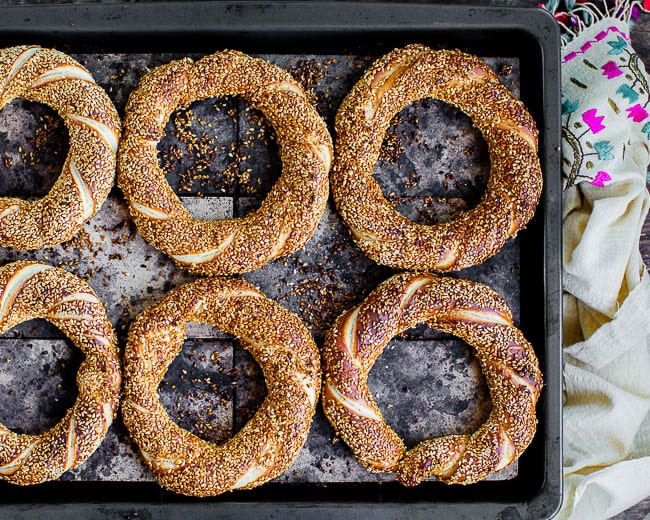
Anyway, I digress.
I love this recipe for a simple reason: If you follow it to a T, the simits you get are just as good – if not better – than the very best of Istanbul’s street food simits.
How to eat simit
Simit can be eaten as it is, as a snack, but I like to tear off small pieces and lathering them with delicious butter. A little jam doesn’t go amiss, either, if you feel like something sweet.
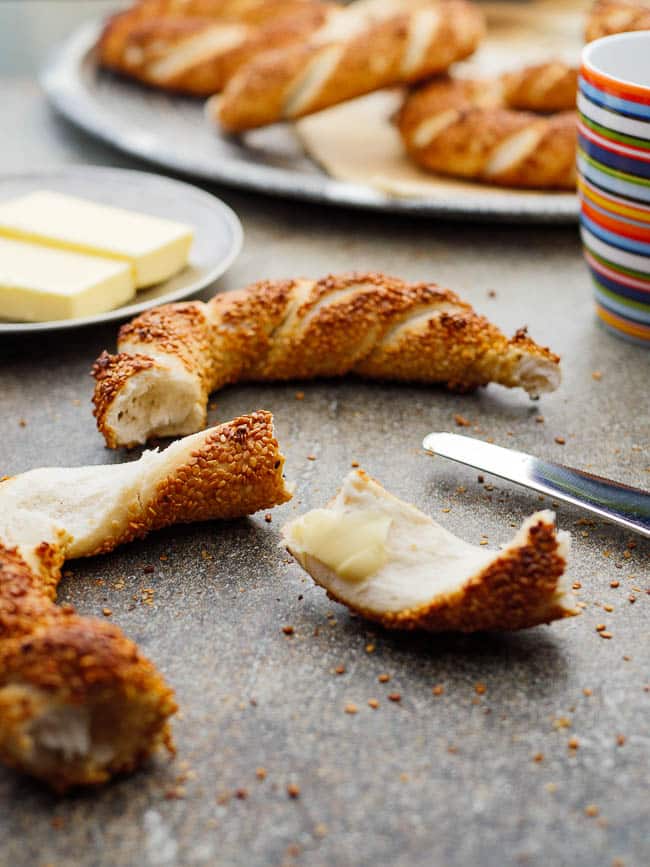
It is also delicious with your breakfast. It is simply the perfect companion to eggs, cheese, tomatoes and olives. If you’ve got menemen at the ready, all the better.
The recipe yields 6 simit of 140 grams each, the standard measurement for Istanbul simit.
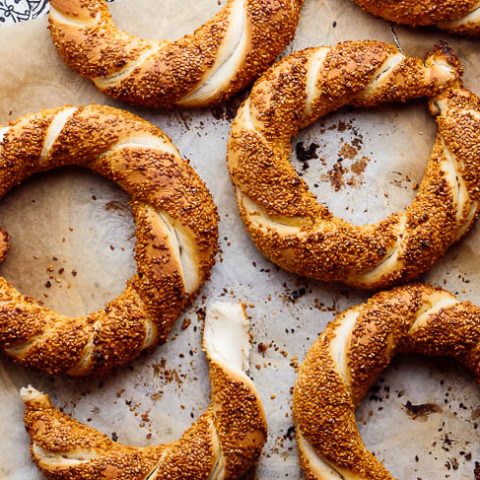
Simit – Turkish sesame bread rings
Ingredients
- 300 g luke-warm water
- 4 g instant (fast action) dried yeast, or 12 g fresh yeast
- 500 g strong white bread flour, pasta or pizza flour, if you can – if not regular white flour also works
- 8 g salt
Topping
- 100 ml grape molasses (üzüm pekmezi)
- 50 ml water
- 1 Tbsp white flour
- 200–300 g sesame seeds, toasted
How I make it
- Place a baking or pizza stone in the oven (if you have one) and preheat the oven to
250 °C.
- Mix the yeast and water. Leave for a few minutes for the yeast to activate.
- Mix the flour and salt. Add the water and yeast mixture. Mix well and knead until the dough keeps together well, 5-6 minutes. The dough should be smooth, but not as soft as a regular bread dough. Cover and set aside to proof for 30 minutes.
- Mix the grape molasses, water and 1 Tbsp white flour in a large, flat bowl. Prepare a plate of toasted sesame seeds. If you only have white (raw) sesame seeds, toast them in a dry pan until golden, stirring or shaking the pan regularly, taking care not to burn any of the seeds. This only takes a few minutes.
- Cut the dough into 12 equally sized pieces. Roll each piece into long sausages. I don't use extra flour for this purpose, but if you find the dough too sticky, sprinkle a thin layer of flour on the surface.
- Take two dough sausages and place them alongside one another. Squeeze the ends together and roll the ends in opposite directions, causing the two sausages to braid and intertwine. Squeeze the two ends together to form a ring. Repeat with the remaining dough sausages.
- Dip the simits into the grape molasses mixture until covered all over. Cover with sesame seeds until you cannot get another seed to hang onto it. Stretch the dough a little as you do this to ensure the simit is as even as possible. Place the ready simits on a piece of baking parchment.
- Flatten the simits ever so slightly before placing in the hot oven. Bake in two rounds until cooked through and golden brown on the outside, 12-15 minutes, a little longer if you don’t have a baking or pizza stone. Keep watching and turn the heat down if the simit looks like it might burn.
- Leave to cool on a cooling rack, but not for too long! Unlike bread, simit is best when eaten while still warm.




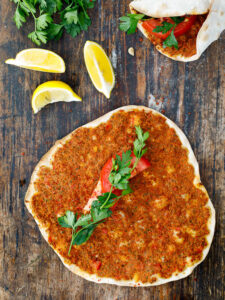
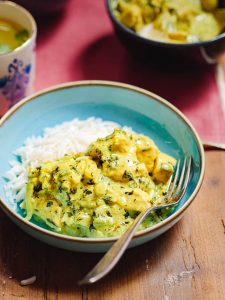
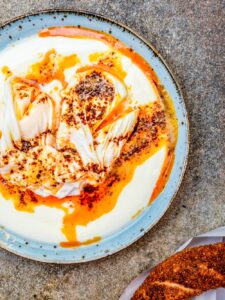

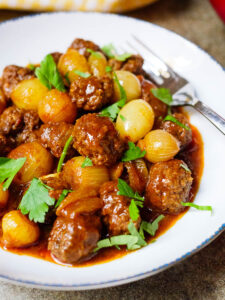
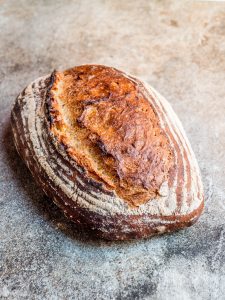




8 Responses
Made these and loved them! Sent pics to a pal in Turkey and got the approval! Thank you!
I tried this recipe and absolutely loved it! I wanted to try to make it with a little fall flair and add pumpkin puree to the dough but I’m nervous I might ruin it. Does this sound like a good idea and if so any tips?
Not tried it, let me know how it works out if you do!
I can’t find grape molasses. Would pomegranate molasses be a good substitute?
Pomegranate molasses won’t give exactly the same effect, but would be an acceptable substitute. Good luck!
I tasted these delicious treats for the first time last month and I’m in Love with it amd everything Turkish.Defiintely giving it a try in my kitchen.
Thank you for the recipe.
Mariam
This is very authentic. Great recipe!
Cooler weather has arrived here in central France along with lots of rain which the garden absolutely needs. But having spent the last half hour to an hour browsing your delicious recipes and reading about simit I can almost feel the summer sun again! Thank you for such interesting stories too, it makes me want to visit Istanbul to sample the food and culture.